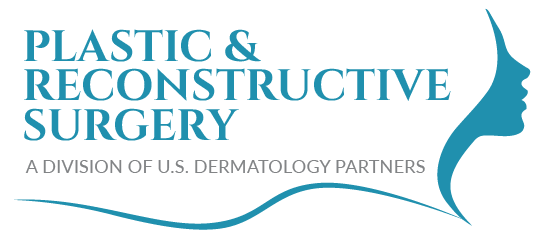If you’re experiencing pain, rashes, frequent bruising or sores, and other issues related to excess breast tissue, a breast reduction surgery may be the best option for you. But, surgery is never something you should rush into. According to Dr. MyChi Le of Plastic and Reconstructive Surgery a Division of U.S. Dermatology Partners, “Breast reduction is a common surgical procedure that reduces the size of breasts to offer significant pain relief, increased confidence, and other benefits for patients. If you’re on the fence about this surgical option, talk to a board-certified plastic surgeon. We can help you understand your options and plan for the best treatment whether that’s breast reduction, another surgical procedure, or a referral for a less invasive treatment option.” In this blog, Dr. Le discusses how breast reduction surgery is performed, the many benefits of this common surgery solution, and what you can expect when you choose this surgical option.
Are You Considering Breast Reduction?
Before moving forward with any surgery, you should carefully consider any risk factors or limitations and discuss them with your plastic surgeon. No surgery is right for everyone, so make sure you feel completely confident before you move forward. If you’re considering breast reduction, there are some factors you need to think about and talk through with your plastic surgeon before moving forward with the procedure, including:
- Breastfeeding – This can be difficult following breast reduction. Some surgical techniques preserve breastfeeding ability, but it may be better to wait until after having children to receive breast reduction surgery, especially if you’re hoping to breastfeed.
- Weight fluctuation – If you’re planning to lose weight, you may want to wait to receive a breast reduction. Weight loss can change the size and proportions of breast tissue. It’s best to receive breast reduction once you’ve achieved or gotten close to the healthy weight you’re working toward. Dr. Le recommends being no more than 10-15 pounds of your reasonable goal weight. Weight gain is another reason why it may be best to wait until after having children to receive a breast reduction.
- Surgical risks – Scarring, infection, loss of sensation, and a range of other side effects may occur following breast reduction surgery.
- Recovery time – Following breast reduction surgery, you’ll need to take at least one week, preferentially 2-3 weeks, to heal, and you’ll need to limit activity for 6 weeks or longer.
Reasons for Breast Reduction
When it comes to candidates for breast reduction surgery, Dr. Le says, “No plastic surgery option is right for every patient I work with. Before I recommend breast reduction, I’ll need to personally examine and interview the patient. That being said, if you feel there are symptoms present that necessitate breast reduction, you’re probably right. You are the expert on your own body, and I’ll always listen to your concerns and help you find a solution whenever possible.”
While everyone is different, some common factors often lead patients to consider breast reduction, including:
- Chronic pain in the neck, back, and shoulders
- Nerve pain that may cause tingling in hands and other seemingly unrelated concerns
- Rashes and skin irritation usually around the underside of breasts or areas where bras rub against skin
- Bra straps digging into shoulders
- Ill-fitting clothing
- Limitations to activities
- Self-consciousness
Benefits and Outcomes
Dr. Le says, “Following breast reduction, my clients experience numerous benefits. The most common is pain relief, but that is only the beginning. Most people are shocked about how much better they feel following the procedure, and they’re usually pleasantly surprised with cosmetic benefits as a breast reduction not only reduces the size of the breast but also lifts the breast tissue including the nipple and areolae.”
Some of the most common benefits of choosing breast reduction surgery include:
- Decreased back, neck, and shoulder pain
- Alleviation of other common side effects related to excess breast tissue
- Improved posture
- Better fitting and more comfortable bras and clothing
- Opportunity to wear bra styles that might not be available or comfortable for larger cup sizes
- A more symmetrical breast structure
- A more lifted breast appearance
- Ability to exercise more easily and with less discomfort
- Improved sleep even without wearing a bra
- Decreased risk for rashes, sores, and infections caused by rubbing of lower breast folds against skin
- Improved self-confidence and comfort
Consultation and Preparation
Before receiving any plastic surgery procedure, you’ll need to meet with your board certified plastic surgeon for a consultation visit. During this initial consultation, your plastic surgeon will start by conducting an interview. They’ll ask you questions about your goals, health history, and factors that may impact the success of your treatment plan. It’s essential that you are open and honest during this consultation and throughout the cosmetic surgery process. That includes letting them know exactly where you’ve experienced pain, what your expectations are, and if you’ve ever experienced any other symptoms like rashes, bruising, and sores related to ill-fitting bras and clothing or other issues related to breast size.
Following this discussion, your plastic surgeon will perform a thorough physical examination to ensure they can make the best treatment recommendation. The physical examination will include:
- Measuring breasts (width, height, and cup size), chest, and ribcage
- Determining the size and position of the areola and nipple
- Examining the health of the skin and the presence of stretch marks
- Recording current breast tissue distribution
- Checking for masses, cysts, or lumps
Finally, your surgeon may ask you to receive additional lab work and imaging prior to the surgical treatment to ensure your safety and their ability to plan your surgery down to the smallest detail. In the days and weeks leading up to your surgery, your surgeon will also ask you to stop smoking and vaping, avoid taking acetaminophen and anti-inflammatory drugs that increase bleeding, and they may ask you to stop or change medications or dosages leading up to the surgery. Be sure to follow all preparatory instructions for breast reduction surgery carefully and let your surgeon know if you’re not able to meet the requested preparatory guidelines.
Schedule Your Initial Consultation Today
Whether you’re simply curious about breast reduction options or you’ve been considering this surgery procedure for years and you’re ready to get started, our team would love to hear from you. You’ll get started by scheduling a consultation with one of our skilled plastic surgeons. We make the process as simple as possible. Just take a few moments to complete our online request form. Once our local plastic surgery team hears from you, we’ll be in touch to finalize the details of your consultation visit.

